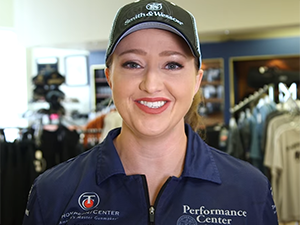
First indoor range experience
Julie: Welcome to the Range. I'm Julie Gollup, the captain of Team Smith and Wesson, and in this video I'm going to guide you through your first indoor range experience. You'll learn important firearm safety rules, as well as range rules to make sure that your range session is safe and productive. The first thing to do when you arrive at the range is read and sign all paperwork. You may be required to sign waivers, safety certifications, and a rental agreement. If you're going to rent a gun. This may take a little time, so plan accordingly. Indoor ranges operate differently, and if you're renting a firearm, make sure you pay close attention to how, when and where you can retrieve that rental. Also, rangers have different rules regarding ammunition. If you're bringing your own ammo, you want to make sure that you check with the range staff to make sure that you can use it. Now, let's talk firearm safety. There are four fundamental rules of firearm safety, and they are always keep your firearm pointed in a safe direction. Never place your finger inside the trigger guard until you are on target. Keep your finger off the trigger unless you intend to fire. Always be sure of your target and what is beyond it.
Range Rules
Julie: If you have any questions about these rules, be sure to discuss them with the range staff. There are also some specific range rules to follow before entering the range, you're going to need proper safety gear and clothing. Eye and ear protection are always required. You may want to double up on your hearing protection, and that means wearing both earplugs and earmuffs as indoor ranges tend to be a little bit louder than shooting outdoors. Many ranges also require that you wear a brimmed cap and that helps prevent hot brass from hitting your face. Open toed shoes and low cut blouses are also strongly discouraged and many cases not even allowed. Food and drinks are usually not allowed in indoor ranges to help prevent exposure to lead and other airborne contaminants. If you've brought food and drinks with you, it's best to leave them in your car or in the lobby area. You may have your choice of any open firing lane or one may be assigned to you. It's important to remember that your firearm must remain in a bag case or range basket until you reach your designated firing lane. It is a good idea to prep your lane before you shoot, and that means lay out your ammunition loading devices and set up your target before you handle your firearm. Now the ranges target system will allow you to move your target forward and back to your desired distance. And here's a little range etiquette tip. Hang your target only after your neighbor has finished shooting so that they can complete their strength.
Safe direction of firearms is important
Julie: When you're ready to handle the firearm, you want to make sure that you keep it pointed in a safe direction at all times and never aim at the ceiling or the floor. You'll also want to make sure that your trigger finger stays straight and outside of the trigger guard until you are on target and ready to shoot from revolvers to semi autos in a full range of calibers. If you're renting a firearm, you'll have a lot to choose from and it's important that you choose something you're comfortable with. Discuss your preferences with a range staff and be sure to ask questions. Pay close attention to how to load and unload the firearm to unload and show clear revolver. It's very simple. Retrieve the firearm from the basket and you want to press forward on the cylinder release and push out on the cylinder to release it from the frame. This is the position it'll lead to be in to bench the gun. Semi-autos are a bit more complicated. You want to retrieve the firearm to press the magazine release button and remove the magazine. Grasp the slide of your non firing hand push forward with your firing hand, while at the same time lifting up on the slide lock. This is the correct position the gun needs to be in to place it on the bench.
Lock the slide of your Firearm
Julie: When placing your firearm on the bench or table, it's important to lock the slide to the rear or leave the cylinder open. Now, there's also no hand to hand transfers allowed on the range, so if you want to hand the gun to someone, simply unload and show clear. Place it on the table or bench so that the other person can shoot it. All range officer commands must be obeyed at all times. Now, if you see any unsafe gun handling, notify a range officer. If you see someone forward of the firing line, call out cease fire. If you drop something forward of the firing line, notify the range officer and they'll help you get it. Never, ever move forward of the firing line. Drawing from a holster may or may not be allowed at the range. You'll need to check with the range staff first. After you've finished with your range session, make sure you unload your firearm and place it in your box case or in the range basket and then clean up your shooting wing. Don't forget to wash your face and your hands with cold, soapy water or special wipes that are designated to reduce your exposure to lead. Thank you so much for watching, and remember these important safety rules every single time you shoot. Be safe and have fun.
YouTube Video Link: https://www.youtube.com/watch?v=FMxGuf1Iy4s
Credit: Julie Gollob, Cabela’s and Team Smith & Wesson
If you want to apply for DC Carry Permit check out our course on CCW.
